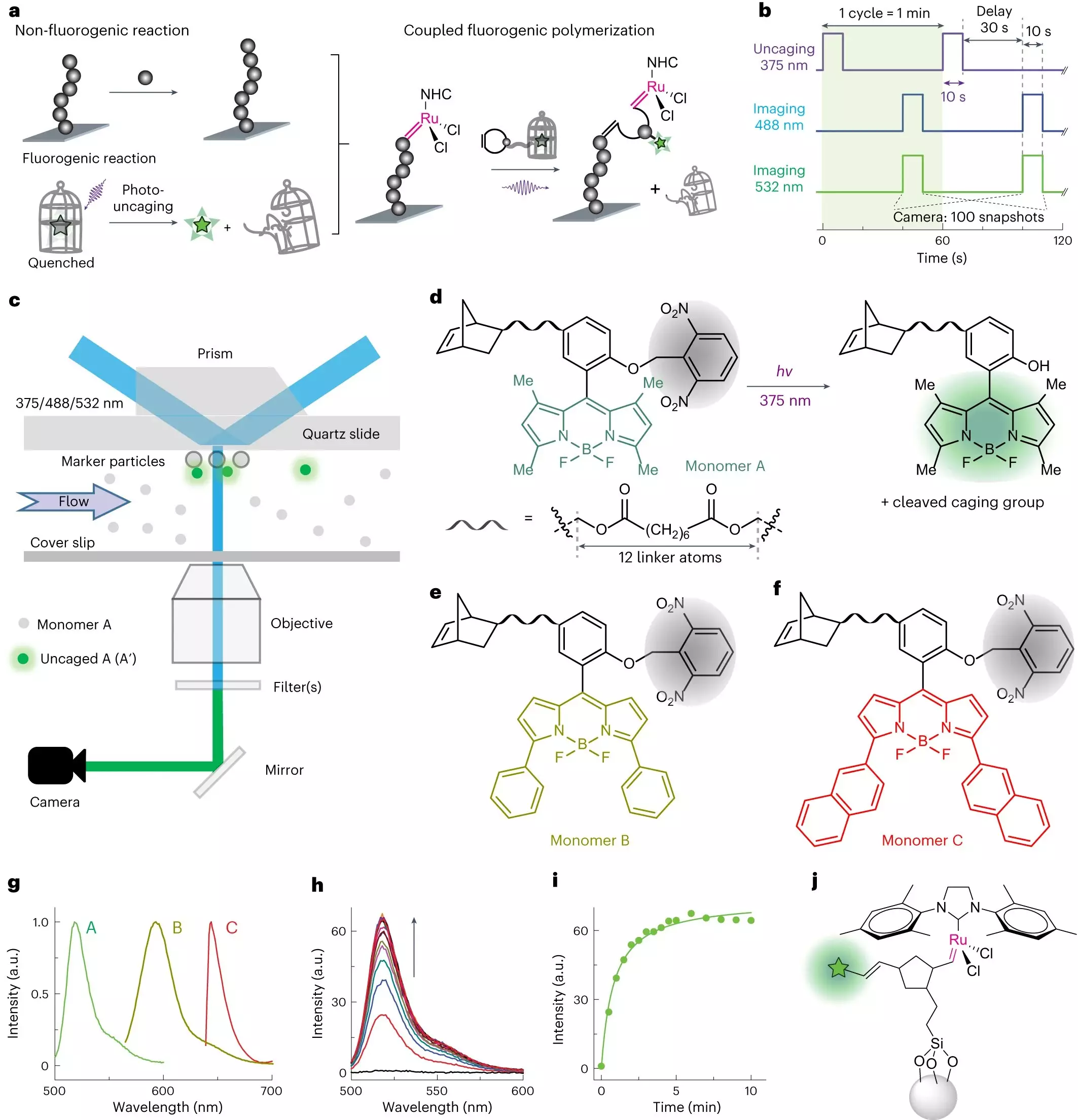In today’s society, synthetic polymers play a critical role in various aspects of our lives, from the clothes we wear to the products we use. These materials are composed of long chains of monomers, and their molecular composition greatly influences their functionality and properties. However, until now, scientists have lacked an effective method for sequencing synthetic copolymers. In a groundbreaking study, Peng Chen and his team have developed a revolutionary technique called CREATS (Coupled REaction Approach Toward Super-resolution Imaging) that allows for the imaging of polymerization catalysis reactions at a single-monomer resolution. This breakthrough not only enables researchers to differentiate between different monomers but also provides insights into the molecular composition of synthetic polymers.
Copolymers are a specific type of synthetic polymers that consist of different types of monomers in the same chain. The arrangement and sequence of these monomers within a copolymer significantly influence its properties, such as stiffness or flexibility. In natural polymers like proteins, the sequence is precisely controlled by nature. However, in synthetic polymers, this precise control has been challenging to achieve. The heterogeneity in synthetic polymers, including variations in length, composition, and sequence, further complicates the sequencing process.
The CREATS method developed by Peng Chen and his team overcomes the limitations of existing sequencing methods. By coupling the polymerization reaction with another reaction that produces fluorescent signals, the researchers can now image and identify individual monomers as they are added to the polymer chain. Each monomer emits a puff of light upon incorporation, and the color of the light indicates the type of monomer. This innovative approach allows for the real-time sequencing of synthetic polymers, offering unprecedented insights into their composition.
With the ability to sequence synthetic polymers at the single-monomer level, researchers can now explore the relationship between structure and function in these materials. By correlating the molecular sequence with specific properties, scientists can develop guiding principles for polymer design. This opens up new possibilities for tailoring polymers to achieve desired properties, revolutionizing industries such as materials science, engineering, and biotechnology.
The implications of this breakthrough extend beyond fundamental research. Understanding the precise arrangement of monomers within a copolymer can pave the way for the development of advanced materials with enhanced properties. By designing specific sequences of monomers, researchers can create polymers with tailored properties, such as increased strength, improved elasticity, or enhanced conductivity. The ability to control the molecular composition of synthetic polymers opens up a new era of material design and innovation.
The success of the CREATS method marks a significant milestone in polymer science, but there is still much to explore and discover. Further research will focus on refining the technique and expanding its applications to more complex polymers. The ability to sequence longer and more diverse polymers will unlock new possibilities in material design and enable the development of even more advanced materials.
The development of CREATS provides researchers with an unprecedented tool for sequencing synthetic polymers. This breakthrough not only allows for the differentiation and imaging of individual monomers but also opens up new avenues for designing polymers with tailored properties. The ability to control the molecular composition of synthetic polymers has the potential to revolutionize various industries and pave the way for the development of advanced materials. With ongoing advancements in this field, the future of polymer sequencing looks promising, and we can expect significant advancements in materials science and engineering.



Leave a Reply